
| (formerly known as Physicampa sapotearum) LACTURIDAE, ZYGAENOIDEA | (donherbisonevans@yahoo.com) and Stella Crossley |
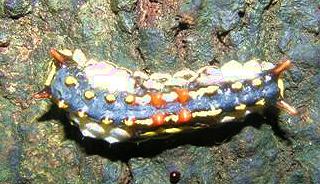
(Photo: courtesy of Lyn Ford, Dorrigo, New South Wales)

| (formerly known as Physicampa sapotearum) LACTURIDAE, ZYGAENOIDEA | (donherbisonevans@yahoo.com) and Stella Crossley |

(Photo: courtesy of Lyn Ford, Dorrigo, New South Wales)
The Caterpillars of this species have built in balloons. There are two large white patches on each side of the body, and when the caterpillar is disturbed, these are inflated. It also then exudes a very sticky substance. Otherwise the animals are grey with two tubercles on the back of each segment.
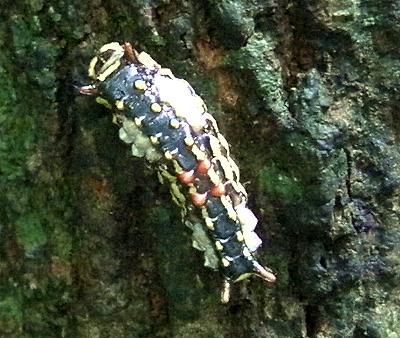
These are yellow on most segments except in early instars they are red on the middle two segments. There are two red or yellow horns on the prothorax and on the last abdominal segment.

The caterpillars feed openly by day on plants in SAPOTACEAE including
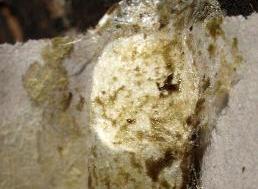
They pupate in crevices of the bark of the food tree in stiff white cocoons.
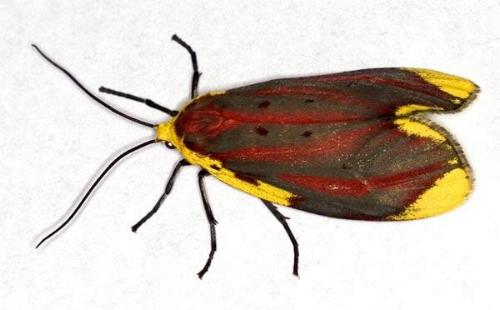
The adult moth has red forewings with dark veins, and with yellow markings along the costa, and at the wingtip and tornus. The hindwings are plain scarlet. The abdomen is also scarlet. The males are rather paler than the females. The wingspan is about 4 cms.
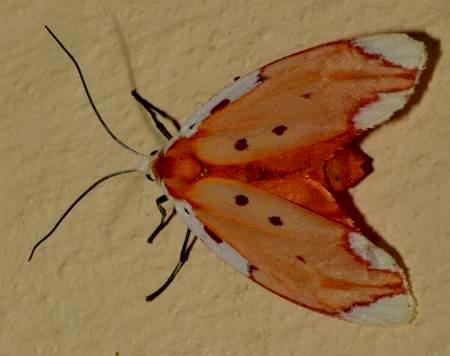
The species occurs in
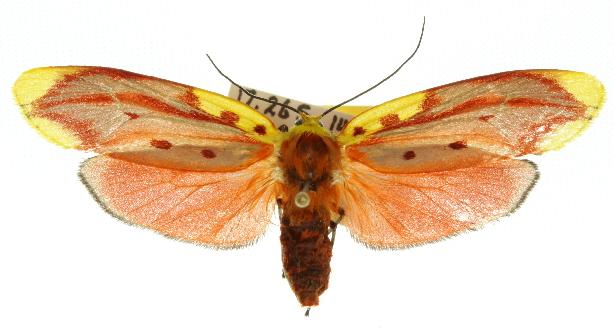
This species was originally described by Alexander Scott in the manuscript of a book based on the drawings of his daughters: Harriet and Helena, to be published in three volumes. The whole book was reviewed pre-publication by their friend William Swainson in the 'Sydney Morning Herald', with some brief descriptions of the species covered in the book, including Physicampa sapotearum. Sadly Alexander never managed to get Volume 3 printed, so the honour of first describing this species in print goes to William Swainson.
Further reading :
Ian F.B. Common,
Moths of Australia,
Melbourne University Press, 1990, pls. 7.21, 24.14, 24,15, p. 298.
Peter Hendry,
At the Light Trap,
Butterflies and Other Invertebrates Club
Newsletter, Issue 48 (March 2008), pp. 9-11.
Buck Richardson,
Tropical Queensland Wildlife from Dusk to Dawn Science and Art,
LeapFrogOz, Kuranda, 2015, p. 100.
Alexander Walker Scott, Harriet Scott, and Helena Scott,
Physicampa sapotearum Scott, and Brachyptila vitulina Donovan,
Australian Lepidoptera and their Transformations,
Volume 3 (1840-1869), Plate 30.
William Swainson,
Review: Australian Lepidoptera and their Transformations,
by Harriet, Helena and A.W. Scott,
Sydney Morning Herald,
30 August 1851, p. 2.
 caterpillar |  butterflies |  Lepidoptera |  moths |  caterpillar |
(updated 17 December 2011, 7 July 2018, 21 April 2022)